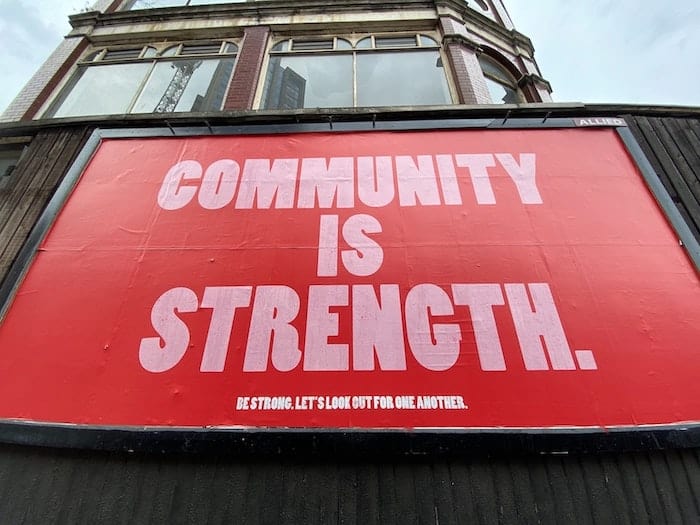By attracting more clients, being intelligent with marketing secures your company’s success. Read on if you want to learn how to market your small business.
Introduction
As a small online business owner, it can sometimes feel overwhelming to juggle everything that needs to be done for your business to thrive. From daily operations of running the business to monthly accounting and invoicing, it’s no wonder that it often feels like you have no idea where or how to start when it comes to marketing. Especially when the budget is tight, many business owners tend to skip out on the marking, and that’s the worst thing you can do!
Unless you specialize in marketing, it might be challenging to get started, let alone grasp how to design a successful marketing strategy for your company. Nonetheless, you are here, trying to understand the importance and investment of your money into the correct channels.
You’ve come to the right place if you wonder where to begin in many social media channels and advertising terms. Let us digest it for you.

What Are Your Options for Marketing?
Back in the old days, traditional advertising methods used to be deciding between a flyer, a brochure, a poster, or an ad in the local newspaper, all of that had to involve multiple businesses, and you had to hire someone or go out yourself and give out flyers to random people. This was costly and hard to measure, and as a small business, it will drain your resources without giving you concrete results, but times have changed, and the best ways to market your small business have gotten a lot more accessible than you might think.
Marketing has advanced from that, and some of your new options where you can market your small business are:
- Search Engines (mainly Google Search and Google Maps)
- Social Media Channels (especially Facebook, Instagram, Twitter, LinkedIn, YouTube, and TikTok)
- Online directory listing (Google, Yelp, Facebook, Glassdoor, TripAdvisor, and more)
- Your Local Community (events, sponsorships, local media)
As you can see, there are quite a few options, and we will go through them all to help you stand apart from other businesses and increase your chance of getting your business in front of more customers. But before we dive deeper into your options, it’s essential to know what you will be marketing, and that’s why you will need to perfect your pitch.
Craft Your Elevator Pitch
You probably heard before that you might be doomed if you can’t sell your business during a ride in an elevator. This is what we call an “elevator pitch” in marketing. Research shows that the average attention span of an adult is only about six to eight seconds. That’s the time you will have to grab someone’s attention. If you engage them during those few seconds, you will have another minute of their attention to sell your product or service.
That’s why it’s crucial to develop your “elevator pitch” you should be marketing your business all the time, wherever or whoever you are with. Take the time to write down and try out your elevator pitch. It will need to be exciting and engaging, short and sweet but with enough information that they will want to hear more. The return on investment will be huge, not just for marketing but also for your self-esteem. When you can rapidly fire all the best facts about your business in a minute or less, people will be impressed and want to do business with you.
Create a Website and Social Media Channels
To do business in this online world, the first thing that you will need to have is a website and an online presence. The first thing people will do when they hear about you is to google your business, and if nothing shows up, they will move on to the next thing. If you are not online, it’s like you don’t exist. If you need help creating a website, contact us today.
A good website serves as a promotional tool and can also tell a story of your business, which many people will latch on to. You can use the website to show what you offer, show how to reach you, and generally provide an experience for your customers.
Whenever you run an ad on either social media or google, it will also be “landing” them on your website, so it’s crucial to have one ready before engaging in marketing activities.
You will have multiple options from creating a website on your own without programming knowledge on websites such as Wix, Squarespace, Shopify, or similar, or you could find a web design company that will do it for you. Depending on how big your budget is, if you want to start small, start yourself, but if you are ready to allocate a bigger budget, definitely try to find a professional who will make it.
The same thing goes for your social media channels. Facebook, Instagram, and LinkedIn are the top three essential ones you will also be running ads on, so you need to have your business registered on them to run successful ads. You don’t need to worry about how many likes/followers you have initially. Just post a few things before you launch your marketing campaigns so that potential customers can see you are active online. Learn best practices when creating social media profile picture.
How to Target Your Audience
Consider this: let’s say you sell cat food and put a billboard somewhere in town. How many will own a cat from 1000 people who see your billboard? How many will then decide to buy your product? The bigger the niche, the harder it is to hit your mark, especially in traditional marketing.
On the other hand, imagine that you can target and show your ads only to people who own cats and have made previous cat food purchases online. That’s the power of targeting in online marketing, and you won’t be shooting in the dark anymore.
To get the right targeted audience, you will need to look at your previous buyers or, if you didn’t have one, create the “perfect” customer. Consider their age, their gender, their purchasing power, where they shop, how they buy the products, and what is their interest? Don’t skimp on any details. The more you study your customer, the easier it will be for you to find similar ones.
Set up The Marketing Channels
So, you perfected the pitch, have a website ready, and have the know-how to target the audience. It’s now time to set up your marketing channels and reap the rewards.
Make Your Business Visible on Google
The first thing you will need to do is set up and claim your business on Google. Google captures more than 90% of the market share, so it’s a no-brainer that you will be starting from here. It’s one of the best ways to get in front of customers actively searching for solutions.
Your “Google Business Profile” allows your business to appear on Google Maps search. Verifying ownership of your listing using your free Google My Firm account is critical to using your Business Profile to advertise your business. Once you have control of your listing, you can improve it by adding content and keywords to help people find your business when they search for relevant terms.
Once that’s set up, you can invest in some ads directly on google through their platform Google Ads, targeting specific words you want your brands to associate with. It’s also a good idea to check out your competition and see how much it would cost you to advertise on their name directly. It can be a bold idea to steal some customers from the competition.

Invest in Social Media
Once you set up your social media channels, you should invest some money first to increase your brand awareness. The more likes and followers you have on your social media page, the greater reach you will have once you start posting content. This will, in turn, increase the chances of you selling your product or service.
Facebook is still the king, and most people are on it, so it’s a great place to start with advertising there; it’s not that expensive. If you follow our steps and create your customer profile, you should be able to target an audience that is most likely to take an interest in your business.
The same company owns Facebook and Instagram, so you can combine and push your ads on both platforms simultaneously. It’s an excellent chance to test out and see what campaigns work better on one or the other.
While the ads will bring new people to your page and secure some likes and follows, it will be your job to keep them engaged. You must keep creating content that will be entertaining and engaging so your followers share and interact with your page, furthermore boosting the reach you will have and increasing sales.
Refine Search Engine Optimisation
You can invest in the advertisement as much as the next guy, but if your website ends up on the 3rd page of a Google search, it’s like you do not exist at all. That’s where Search Engine Optimization, or simply SEO, comes in handy. Put. It’s a set of practices that align your business website with Google’s ranking algorithm.
We won’t detail how it works because it keeps changing based on artificial intelligence and complex algorithms. Still, all you need to know is that its goal is to produce the most accurate and quality results for people who use Google to search. You can check out our SEO services to find out more.
To achieve that, you will need to optimize your website for searches, especially for those searching for what you have to offer. SEO isn’t just one tactic, but many collectively work together to improve your Google ranking.
Some good tips for improving SEO are:
- Having related keywords to specific pages and places on your website. Try to figure out as many niche-specific keywords to your business and add them contextually, not just at random.
- Producing high-quality original content regularly with tagged images. The best example of this is a blog. If you get people to read and enjoy your blogs, you will be ranked higher.
- Having a high page load speed and good security. This is imperative, and without it, you won’t even be ranked and might even be flagged as a fraud. Google doesn’t take any security issues or low load speed lightly, so stay clear of high-resolution pictures that will take more time to load.
If you manage to do all this, your business will be ranked high in results, and you will get Google on your side. They will help promote your business by showing your website on top of search results closely related to your niche. It doesn’t get much better than that.
Click here to learn about our successful SEO collaboration with a local driving school.
Tap in Your Local Community
Small business is usually highly tied to their community, so use this to your advantage. Organize webinars, meetups, events, and hangouts in your local community. This will increase your presence and help with word-of-mouth marketing, which is still one of the best marketing methods.
Give back to the community with social events and charity work; it will increase brand awareness and have more people embrace your business as a good one. Offer discounts and gits to marginalized social groups and people in need and connect with a similar company to broaden your reach of influence.

How to market your small business – Conclusion
Marketing your small business will take some effort, but you will surely benefit if you follow our guide. Stay focused on what you offer and who your customers are, refine your pitch and broaden your marketing reach, and in no time, you will have customers flooding your business.
Don’t be afraid to spend money on ads, do a lot of testing, go with what the numbers tell you, inform yourself about new marketing trends, and you will in no time be at the top.
How Clio can help
We hope that this article has given you some ideas on how to market your small business.
Clio Websites is a full-service website design and marketing company in Calgary. We have loads of experience with responsive web design, website maintenance, WordPress development and support, and SEO. Clio offers free consultations and free website evaluations and we receive glowing reviews from our clients.
Clio is always available and happy to answer any questions about this website launch checklist so don’t hesitate to get in touch with us if you need help.



